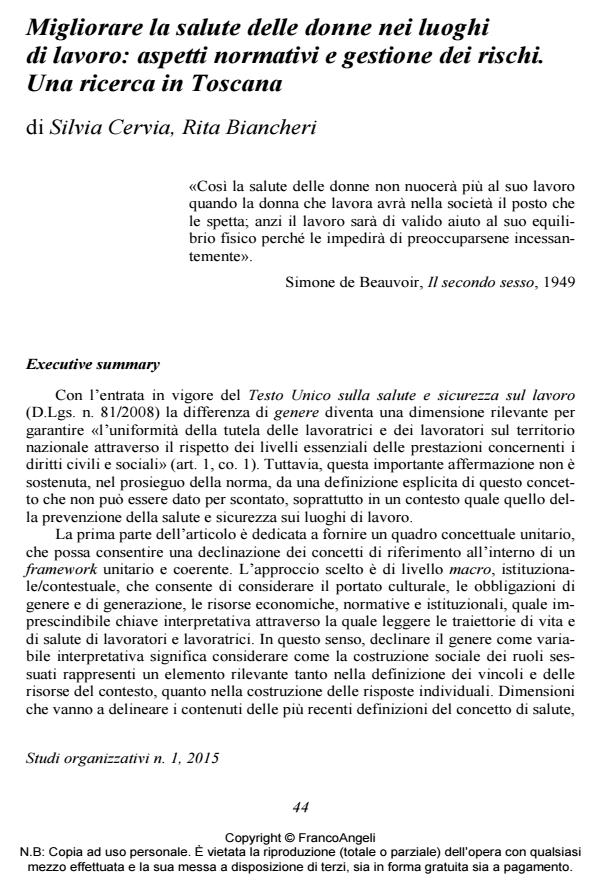Migliorare la salute delle donne nei luoghi di lavoro: aspetti normativi e gestione dei rischi. Una ricerca in Toscana
Journal title STUDI ORGANIZZATIVI
Author/s Silvia Cervia, Rita Biancheri
Publishing Year 2015 Issue 2015/1
Language Italian Pages 29 P. 44-72 File size 279 KB
DOI 10.3280/SO2015-001003
DOI is like a bar code for intellectual property: to have more infomation
click here
Below, you can see the article first page
If you want to buy this article in PDF format, you can do it, following the instructions to buy download credits

FrancoAngeli is member of Publishers International Linking Association, Inc (PILA), a not-for-profit association which run the CrossRef service enabling links to and from online scholarly content.
With the Occupational Health and Safety Act (Legislative Decree 81/2008) Italy recognizes the gender as a relevant factor to ensure the equal protection for men and women at work. While introducing this important innovation, the text of the decree does not provide any useful definitions for operationalizing the concept of gender in the context of the promotion of health and safety at work. The paper aims to provide consistent definitions of the key concepts of health and gender, which are placed within a common framework defined by the contextual approach. From this point of view the gender perspective allows to consider how the social construction of gendered roles represents an important element both in the definition of the constraints and resources of the context, and in defining the possibility of response at the individual level. The second part of the paper presents the first results of the research carried out, at macro level, in Tuscany by analyzing secondary data on labor market in connection with those concerning accident at work. The analysis, despite critical issue due to the use of database born for insurance, highlights the need to proceed in more in-depth analysis considering, more and more, in an integrated way these two aspects. To do this it is necessary, as the paper highlight, to act on the data storage system.
Keywords: Gender, Health, contextual approach, Safety at Work, Differences, Inequality
Silvia Cervia, Rita Biancheri, Migliorare la salute delle donne nei luoghi di lavoro: aspetti normativi e gestione dei rischi. Una ricerca in Toscana in "STUDI ORGANIZZATIVI " 1/2015, pp 44-72, DOI: 10.3280/SO2015-001003